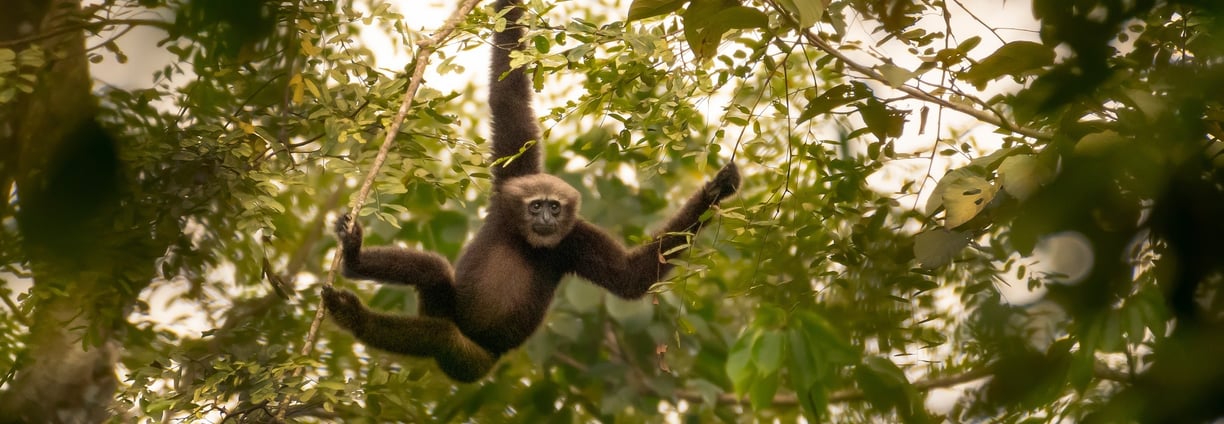Gibbon Wildlife Sanctuary: A Forest Island Preserving Six Primate Species in its Dense Rainforest
11/18/20232 min read


Nestled in the northeastern state of Assam, India, the Gibbon Wildlife Sanctuary stands as a testament to the region's commitment to preserving its rich biodiversity. Spanning across an area of approximately 20.98 square kilometers, this sanctuary is renowned for its role in the conservation of the endangered hoolock gibbons, making it a vital ecological refuge and a paradise for nature enthusiasts.
Established in 1997, the Gibbon Wildlife Sanctuary was specifically designated to protect the hoolock gibbons, the only ape species found in India. These charismatic primates, with their distinct white eyebrows and soulful eyes, have faced severe threats due to habitat loss and fragmentation. The sanctuary's primary mission is to provide a secure habitat for these arboreal creatures, ensuring their survival and contributing to the larger effort of conserving India's unique wildlife.
The lush green canopy of the Gibbon Wildlife Sanctuary shelters not only hoolock gibbons but also a diverse array of flora and fauna. The sanctuary is characterized by its evergreen and semi-evergreen forests, providing a haven for numerous plant species. Towering trees, vibrant orchids, and endemic plants create a vibrant tapestry of life, fostering an environment conducive to various wildlife species.
One of the striking features of the sanctuary is the melodious symphony of birdlife that fills the air. A haven for bird watchers, the Gibbon Wildlife Sanctuary hosts a variety of avian species, from colorful songbirds to majestic raptors. The presence of a healthy bird population indicates the ecological balance maintained within the sanctuary and underscores its significance as a hotspot for avian biodiversity.
The diverse mammalian fauna within the sanctuary further enhances its ecological importance. Apart from hoolock gibbons, the sanctuary is home to several other primate species, including capped langurs and Assamese macaques. The presence of these primates signifies a healthy and functioning ecosystem, where different species coexist in harmony. Additionally, various deer species, wild boars, and small carnivores contribute to the overall richness of mammalian life within the sanctuary.
In addition to its conservation efforts, the Gibbon Wildlife Sanctuary offers a unique opportunity for eco-tourism and nature education. The sanctuary has well-defined trails and viewpoints that allow visitors to explore its natural beauty while respecting the delicate ecosystem. Nature enthusiasts and researchers alike find solace in the tranquility of the sanctuary, with its diverse landscapes providing an immersive experience in the heart of Assam's wilderness.
Despite its relatively small size compared to other protected areas, the Gibbon Wildlife Sanctuary plays a pivotal role in the larger landscape of biodiversity conservation in northeastern India. It serves as a crucial corridor connecting different forest fragments, facilitating the movement of wildlife and promoting genetic diversity. This connectivity is essential for the long-term survival of species in the face of ongoing habitat pressures.
In conclusion, the Gibbon Wildlife Sanctuary stands as a beacon of conservation in the northeastern region of India. Its dedicated efforts to protect the endangered hoolock gibbons, coupled with its role in preserving diverse ecosystems, make it a model for wildlife sanctuaries across the country. As we navigate an era marked by environmental challenges, sanctuaries like Gibbon play a vital role in ensuring that future generations can continue to marvel at the wonders of India's natural heritage.

